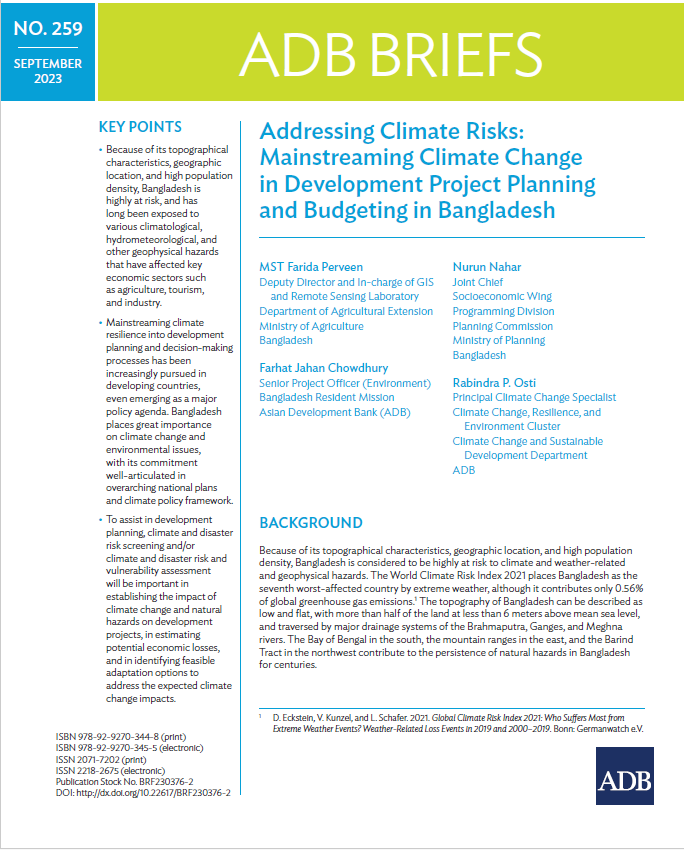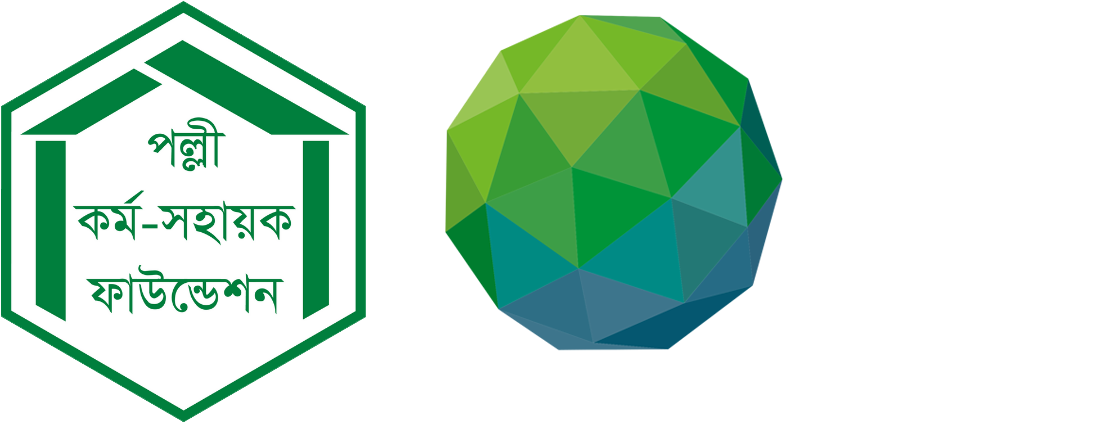🌿 COP 30 - Building a Greener Tomorrow
The 30th UN Climate Change Conference (COP 30) is taking place in Belém, Brazil. Stay informed about global climate actions, negotiations, and live sessions from 10 – 21 November 2025.
Get Updates
Bangladesh Education Sector Review

Files
Date
January, 2024Author(s)
- GroundWork, in Washington, DC
Abstract
Over 300,000 teachers serve in 76,000 formal primary schools and 95 percent of the primary sub-sector students are enrolled in formal schools. There are eleven types of formal primary schools. Over 55 percent of the teachers serve in the 37,700 government primary schools and these teachers are permanent full-time teachers. A Government Primary School teacher on the average receives a salary of Tk 4,000/ per month. Another 25 percent of the teachers serve in the government assisted registered non-governmental schools and the government pays 90 percent of their salaries. About 10 percent of the teachers serve in the Ebtidayee Madrassah schools and the government through the Madrassah Board also pays 90 percent of their salaries. This means that nearly 90 percent of the teachers are full-time regular teachers and the government pays their salaries. The balance 10 percent serves in all other eight types of schools and are largely part-time teachers. They are given a monthly honorarium of Tk 500 - Tk 750. This includes the teachers in the government run Community and Satellite Schools. In addition to these, there is nonformal primary schools run by the non-governmental organizations and between 4 percent - 8 percent of the primary students are enrolled in those schools. Although in the official hierarchy of the bureaucracy a primary school teacher holds a very low level a teacher is a well-respected person in society. The recruitment of teachers to government primary schools is centrally controlled. Government needs to recruit about 3,500 teachers annually to meet the attrition due to retirement. The requisite minimum qualification to become a primary school for a female candidate is Senior School Certificate (SSC) and Higher Secondary Certificate (HSC) for a male candidate. The lower level of qualification for female candidates was introduced in 1990 to increase the percentage of female teachers in the system to encourage and facilitate the enrollment of the girl child. All candidates to become a teacher in a government primary school have to appear for a competitive selection test and an interview and the selected candidates are appointed at district level to the schools where vacancies exist. However, due various types of influences the objective recruitment and efficient deployment of teachers is much hindered. Although there is a fairly well established institutional framework for teacher training and support, these institutions seriously suffer professional deficiencies. There are 54 Primary Teachers Training Institutes (PTIs) and they offer a one-year in-service training course leading to the Certificate in Education for primary teachers. About 95 percent of the teachers in government primary schools have this qualification. On the contrary, 90 percent of the teachers in the registered non-governmental schools and Ebtidayee Madrassahs have not received any formal teacher training. All the part-time teachers in all other types of schools, including the nonformal schools, receive only 14 days of training as pre-service training. Primary teacher is also supported with regular in-service training through sub-cluster training and Upazila Resource Center training activities. There is a sub-cluster training system, which provides one-day in-service training to all primary teachers every two months. Upazila level Resource Centers (URCs) are being established to s provide further support to teachers at local level. The selection process, deployment as well as the teacher training system are deficient in many ways. Poor quality of the teaching is recognized as one of the key variables contributing to the low level of learning achievement in primary schools. The institutional culture in all institutions of the education sector, particularly at schools, ii teacher training institutes, and field offices contributes to the poor quality of teaching and learning. The general lethargy and lack of initiative, lack of professionalism, lack of trainers and teachers, poor deployment of trainers and teachers, lack of self initiatives and incentives for the Trainers, Headteachers and teachers to improve their professional status, lack of independence and total control of all activities by the center, lack of facilities, lack of culture of reading and learning, poor quality of academic supervision, the practice of deputation of teachers to other jobs with no replacement of staff, teachers giving preference to tutoring to earn more by neglecting the routine teaching, and unethical practices such as irregular attendance, non-attendance of classes, lack of linkages between and amongst higher learning institutes, etc have established an institutional culture that contributes to poor learning achievement in children.. There are many development partners involved in primary sub-sector teacher development. However, the quality of the teacher and teaching has not improved at any noticeable level particularly due to the poor quality of training, deficiencies in the training and supervisory systems, and the lack of coordination and monitoring of training activities. Any further inputs to teacher development should be directed at management of change of institutional culture without which other physical and material inputs would not bring about the expected outcomes in the teacher to support quality improvement in learning.
Citation
No Citation
Publisher
GroundWork, in Washington, DC
Rights Holder
GroundWork, in Washington, DC
URI
https://knowledgehub.pksf.org.bd/collections/Yy84ZVFWdTVjYTBRKzZRSEd6YXlQUT09
